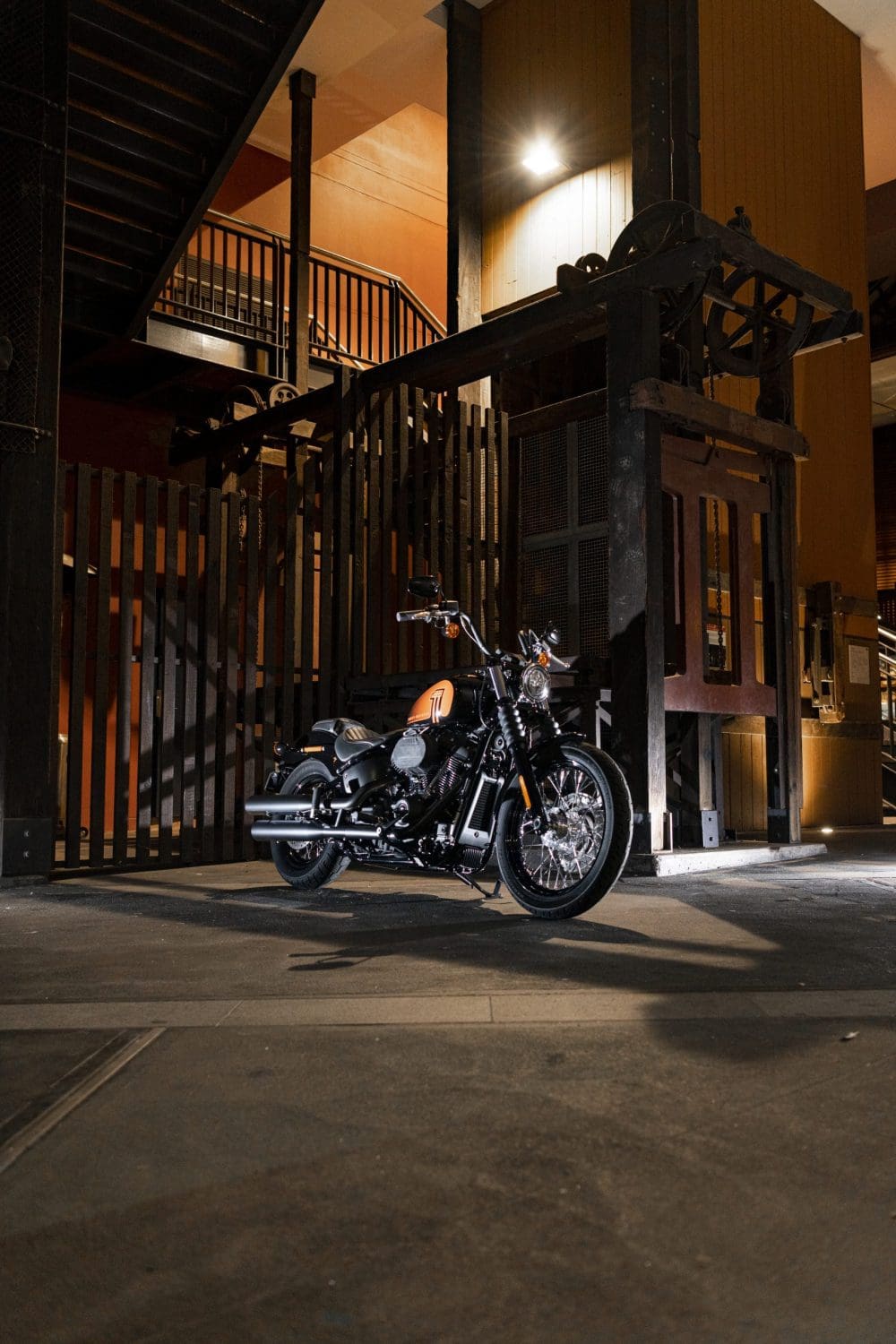Harley-Davidson’s bare-bones Street Bob gains more than a new coat of paint for 2021, it gets an even bigger beating heart
TEST: PETE VORST PHOTOGRAPYH INCITE IMAGES
If your prerequisites for motorcycle ownership includes latest-spec electronics, sublime handling and massive horsepower, then you’re probably not even entertaining the idea of a Street Bob. Or any Harley-Davidson, for that matter.
Harley’s new-for-2021 Street Bob offers none of this and it shouldn’t – it’s not supposed to, that has never been Harley’s selling point. Harleys have been about the sound, the vibes, the smells, the look and that touch of cool that metric cruisers have struggled to achieve since they came to be a thing.
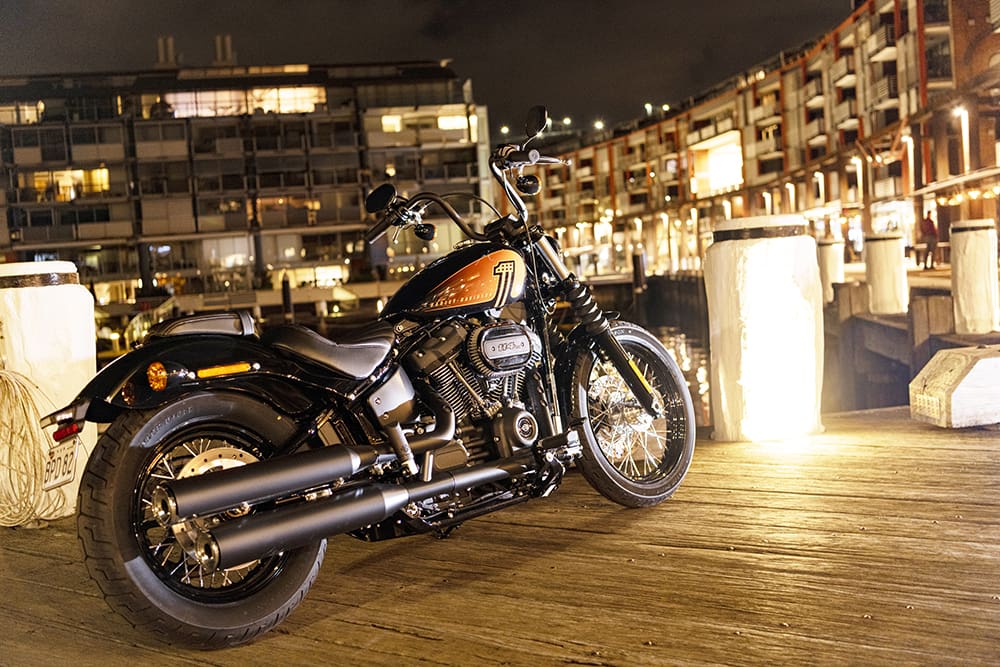
The Street Bob has remained pretty much unchanged since the launch of the all-new Softail platform in 2018 – with the same chopped rear fender bobber looks and the same 107 cubic-inch powerplant (with a splash of new paint) constituting the only significant changes in that time. But for 2021 Harley has performed a heart transplant on Bob and shoehorned in its 114 cubic inch Milwaukee-Eight in place of the 107 and, in the process, given the Bob a mighty kick in the tail. It’s lifted the bobber into a new niche I shall call ‘muscle bobbers’. Why not; there’s a niche for every other obscure category?!
The 107-powered Street Bob was no slouch, you actually didn’t need any more power in what was one of Harley’s lightest bikes. But as I’m sure any hoon would agree, there’s nothing cooler than taking a high-powered bike and jamming a bigger powerplant in it and making it faster.
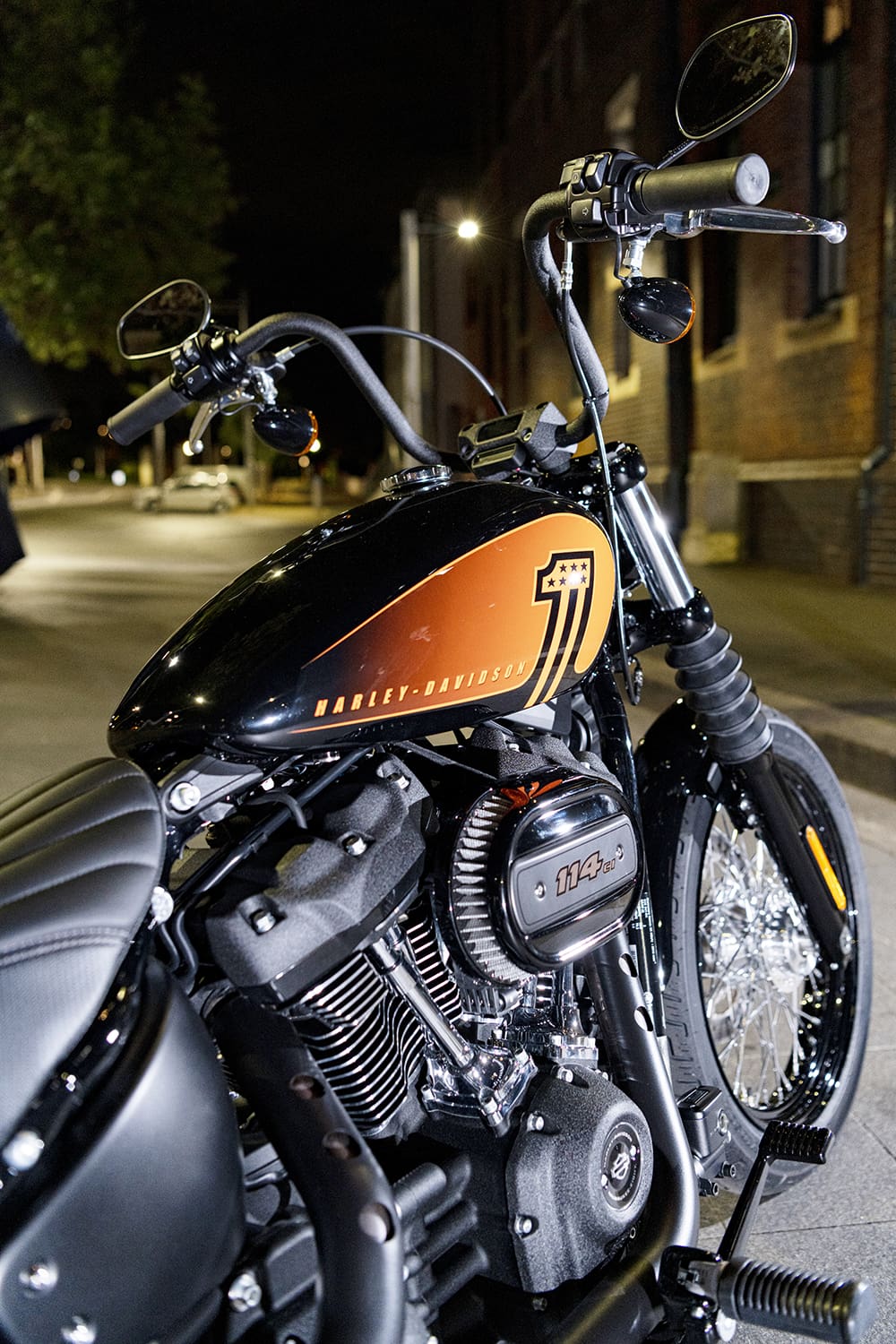
Capacity now increases from 1745cc (107ci) to 1868cc (114ci), and that lifts torque to 161Nm at 3000rpm from the 107’s 145Nm. And, while it’s reasonable to expect that power has been increased as well, H-D doesn’t release power figures. The result is a package weighing in at 288kg dry – just 2kg heavier than the 107 incarnation. An increase of 123cc and 16Nm might not sound like much but it’s enough to take the Street Bob’s tyre-frying abilities to the next level.
I don’t use the term ‘tyre-frying’ loosely, because that is what unfolds if and when you attempt to feed 161Nm of torque through a rear 150/80-16 OEM Dunlop by dropping the clutch in first, second or third gear. And why wouldn’t you? It’s some of the most fun you can have with your clothes on. Although I don’t condone those sorts of shenanigans, should you wish to partake in this most joyous of behaviours, the low centre of gravity and long wheelbase make play time predictable as well as fun.
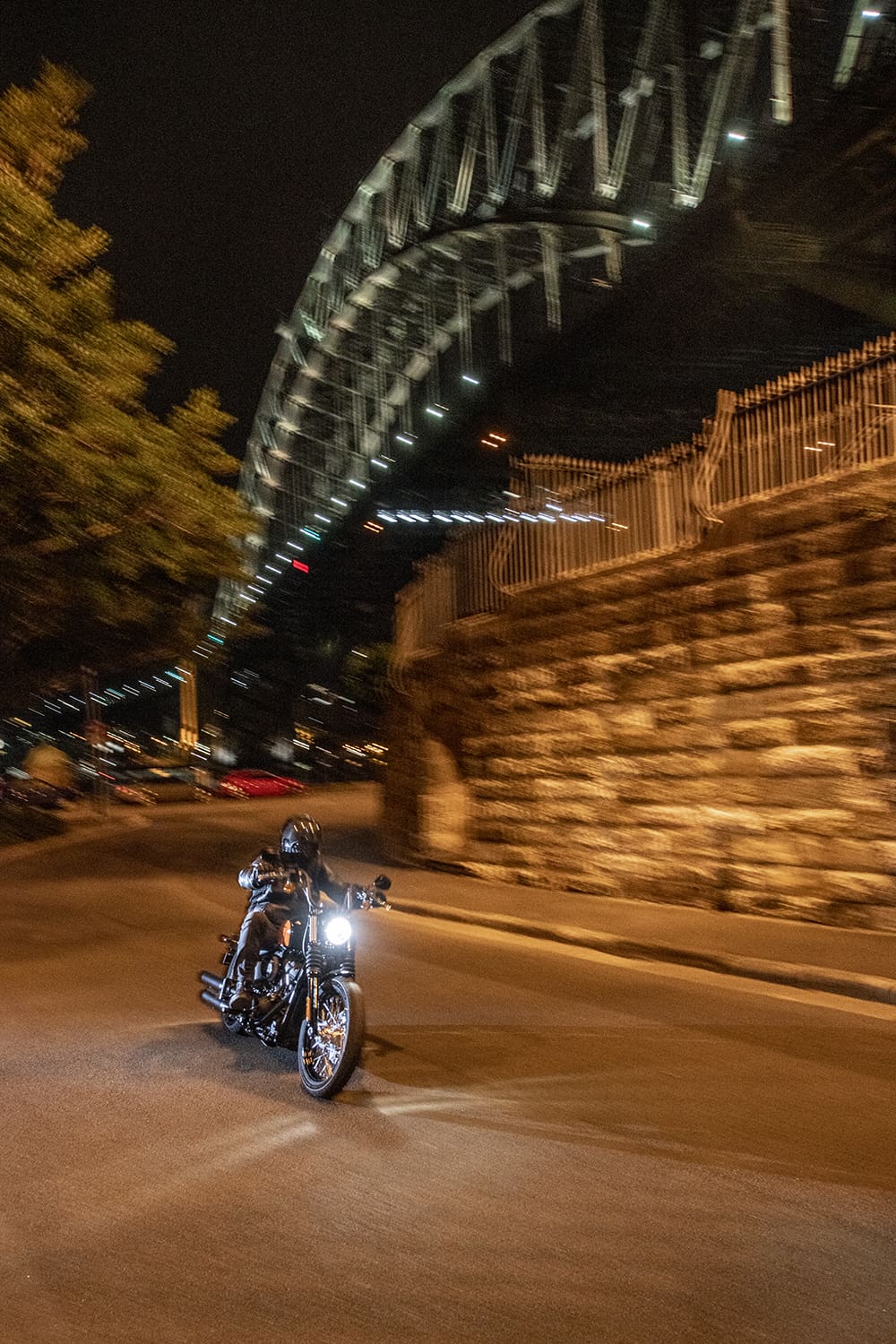
But apart from the hoon factor, the extra torque has meant that Bob is just generally easier to get along with. There’s no need to flick through the six-speed gearbox and other than stop-start city riding or freeway stuff, the mammoth torque of the 114 lets you set and forget. The Milwaukee-Eight has the same pushrod ticky-tick that all Milwaukee-Eight Harleys have – it’s not an overly nice sounding engine. The standard pipes mute any sort of toughness from the exhaust note and, if it was mine, I would consign them to the shelf immediately and fit something nice and loud.
At 299kg ringing wet, it’s the lightest Softail in the range with a 114-cubic-inch engine in it. That doesn’t sound light, but with most of the weight down low and just 13.2 litres of fuel up in the tank it feels even lighter than its measurements suggest it should.

Still, with my rotund chassis perched upon it, the Bob has a rolling weight of over 400 kilograms to deal with and that’s a fair chuck to get going and pull up. Bob’s restraint is handled by a Harley-Davidson-branded four-piston caliper up front clawing at a single 300mm disc, with rear braking effort exerted by a twin-piston caliper gnawing at a 292mm rear disc.
The front works well enough – it’s not particularly powerful in this situation but it does the job without fuss. The rear brake on every Harley I’ve ridden is usually pretty damn good – loads of power and excellent feedback that helps settle the bike in both fast and slow speed corners, but that isn’t the case with the Bob’s rear anchor. Maybe it needs bedding in, but I found it weak and, especially in the wet, I felt a disconnect between the pedal and what was happening out back – I just never felt that I could fully gauge where full braking effort ended and the ABS spasming, tyre sliding, and sphincter puckering began.

It’s a testament to the quality of the current Softail chassis that Harley can sling more grunt at the Bob and not have it feel as though the bike is trying to twist itself in knots – previous generation Softails could often feel like that just pushing them around the garage and the rear suspension especially was pretty woeful. Much has changed, however, and the hidden rear monoshock with preload adjustment is light years ahead of the old setup as is the 49mm dual-bending valve 49mm forks with old-school rubber gators.
Nobody, including Harley, is trying to convince us that this is any kind of competent twisty-road scratcher, but it handles really well – especially compared to the Breakout we tested (Vol 70 No 11) – in fact as long as your cornering speeds aren’t crazy it’s an entertaining and fun bike to flick around. Flicking through traffic, hooking into the next street or ripping through a hairpin onto the freeway – the old Harley adage that you need to hop off, pick up the back and move it across the road to get it turned is no longer applicable. It’s only when your speed comes up that its limitations – which is different to flaws – make themselves known. It’s a cruiser, it’s not built to hit corners at 200km/h.

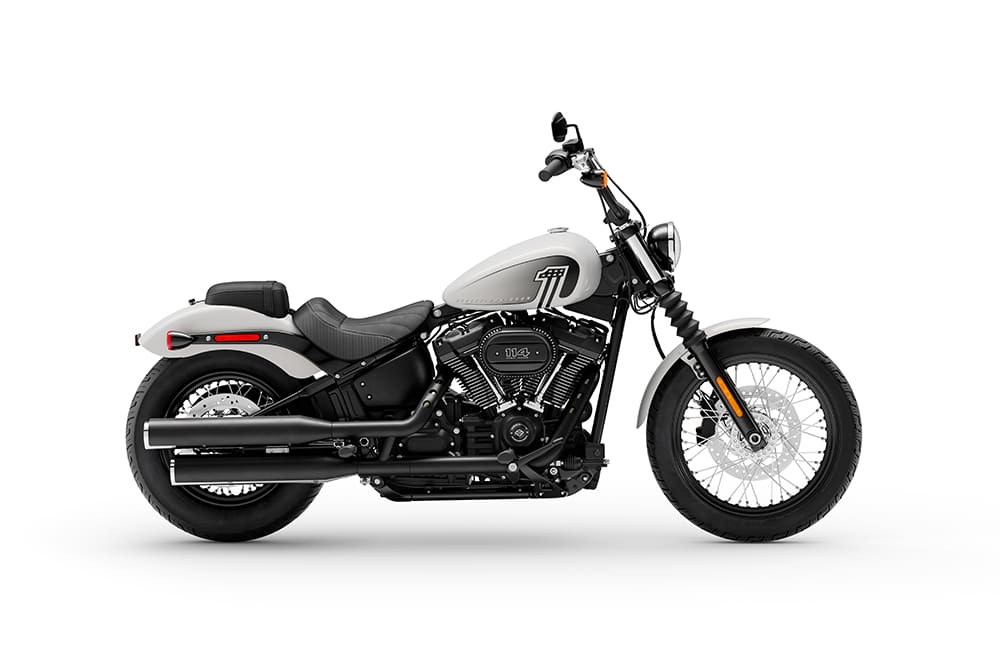
The two main issues as you gather pace are the raked out fork, which saps the front-end feel, and the suspension. Although it’s a massive improvement over the previous generation’s equipment, it’s also lagging behind more modern components fitted to competing brands. Hitting acute bumps in the road at speed is a fairly unpleasant and jarring experience which can upset you and Bob if you encounter bumps mid corner. However, kept to appropriate speeds even on poor roads it’s a predictable and competent steerer and there’s no suspension trait a decent tuner couldn’t sort for you.
So, Harley has given us a Softail that handles in an acceptable manner in standard trim – which is awesome… until you try and turn into a side street, or make a turn around a roundabout. H-D list available lean angle as 28.5º on either side, which is pretty average. On right-hand corners you’ll massacre the footpeg without even having the pleasure of showering your mates with sparks until the rubber wears through, and on left-hand corners you’ll first start reshaping the sidestand before butchering the footpeg. I’m not even talking about decent speeds here, just everyday negotiations, and it wears pretty thin – literally! It’d be closer to forgivable if the ground clearance issue was at the sake of increased comfort, but even comfort – especially for a cruiser – is compromised for a six-foot-plus rider like me.

The footpegs always seem to be in your way and ready to jag your boot as you put your feet down. To me, it feels like the natural position for your feet should be stretched out towards the front in a similar fashion to Harley’s far more comfortable Fat Bob. Apart from being oddly placed along the side of the bike, they seem to be mounted quite high as well with my knees positioned a good way above the tank – a remarkable feat of engineering considering the lack of ground clearance.
The low 680mm seat is a well-crafted piece of kit, however, and my legs got sore well before the seat forced me to alight. The seat kicks up at the back and stops you sliding off the back if you’re too ambitious with the throttle, however this is also the point that puts pressure on your derriere and probably made worse by pushing back into it in an attempt to acquire more leg room.

A seat and pegs for a pillion are fitted as standard equipment for 2021, and the pillion seat can be easily removed by unscrewing two bolts for a sleeker look. Though, given how hard it is, I calculate that it’s there for looks or emergency lift-giving only. My better half sat on it before she immediately hopped off and walked away laughing.
As with the Street Bob’s styling, Bob is bare bones in the electronics department, too, with fuel injection, ABS and the LED headlight the only gadgetry on offer from the factory. Information is fed to the rider via a small and very neat display mounted on the ape-hanger style bars that packs a fair bit in to a petite display. In addition to readouts for speed, gear position and fuel level, you can scroll between odo, A and B trip meters, fuel range, clock and tachometer.
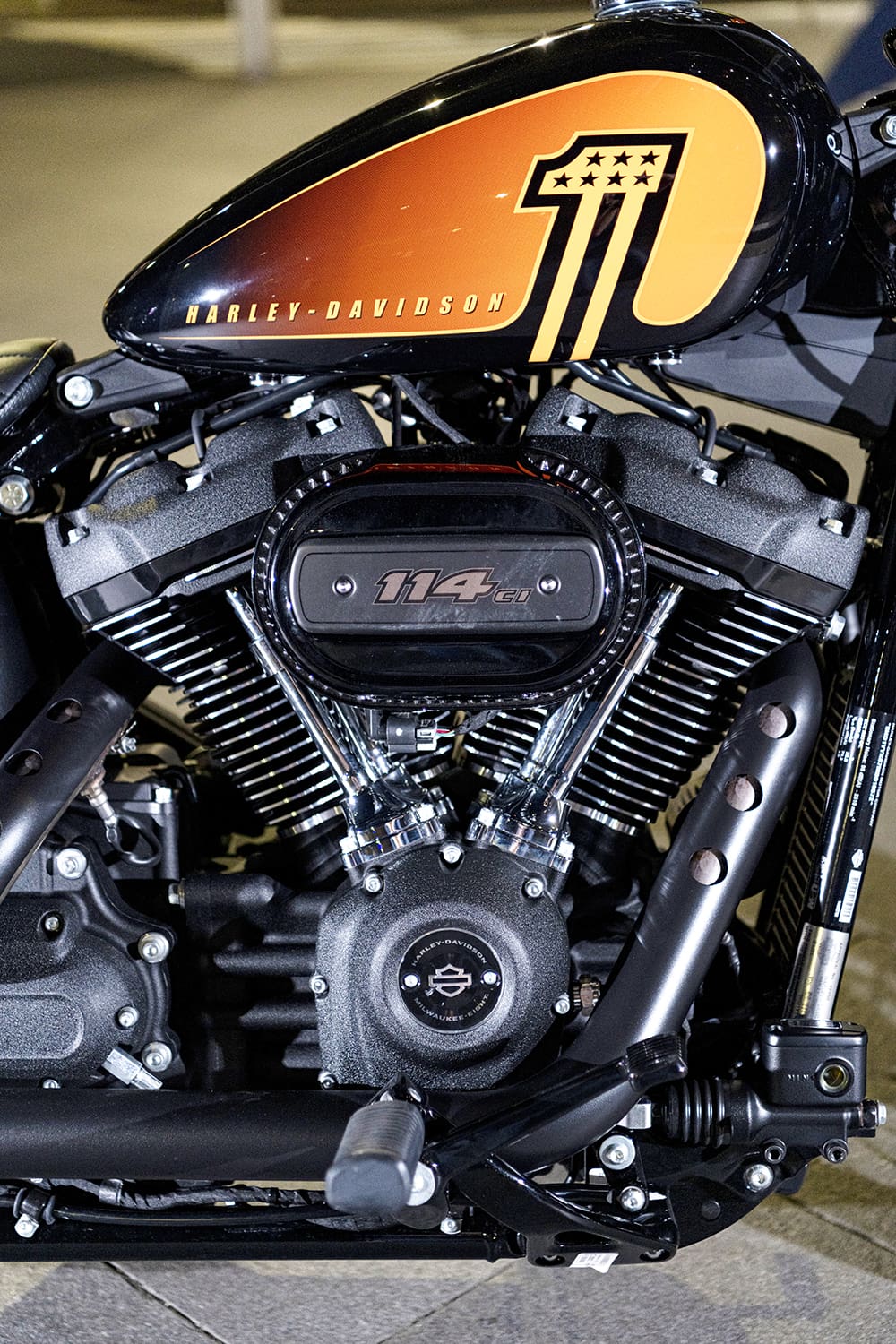
The 2021 Street Bob is the Bob Harley should have made from the start. Despite a slimmed down range there are still eight bikes in Harley’s cruiser range to choose from and prior to 2021 the Street Bob relied purely on styling to make a name for itself and jag sales.
But now with its rockabilly looks and new beefier engine I reckon it’s raised its head above the pack and if you’re considering a Harley just to cruise around on – from rocking on down to the local for a schooner or cruising to your favourite Saturday-night hangout, you’d be mad not to at least consider the Street Bob.
Sure, I found it a tad uncomfortable, the suspension isn’t perfect, and it needs pipes, but those are all pretty easily rectified. And despite these niggles, its looks, fat engine and sub-$24K price tag make it a pretty compelling proposition.
